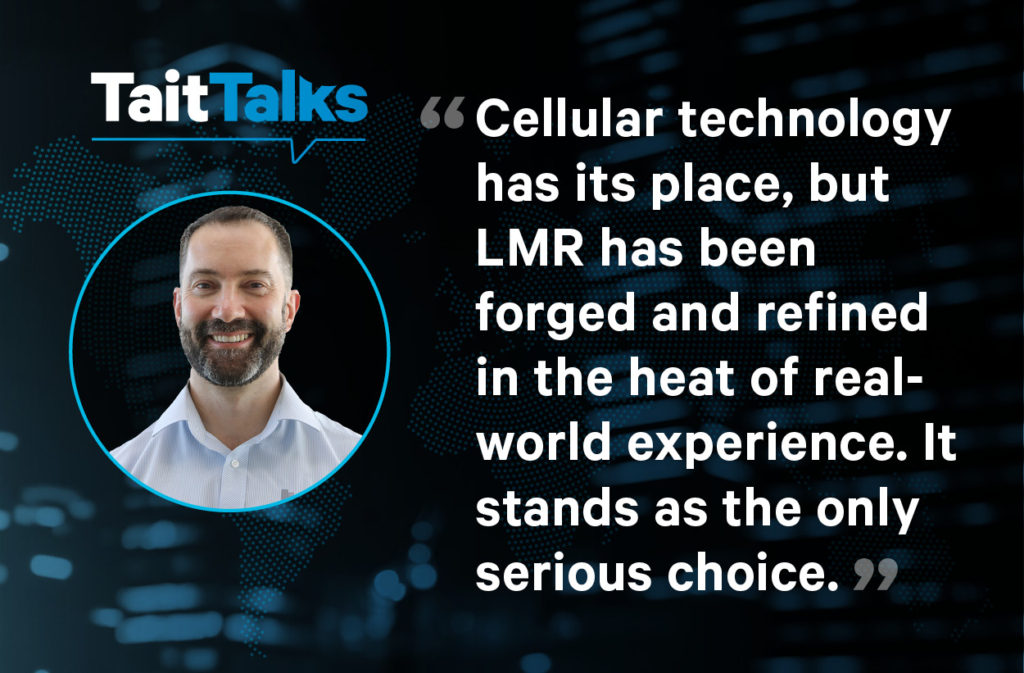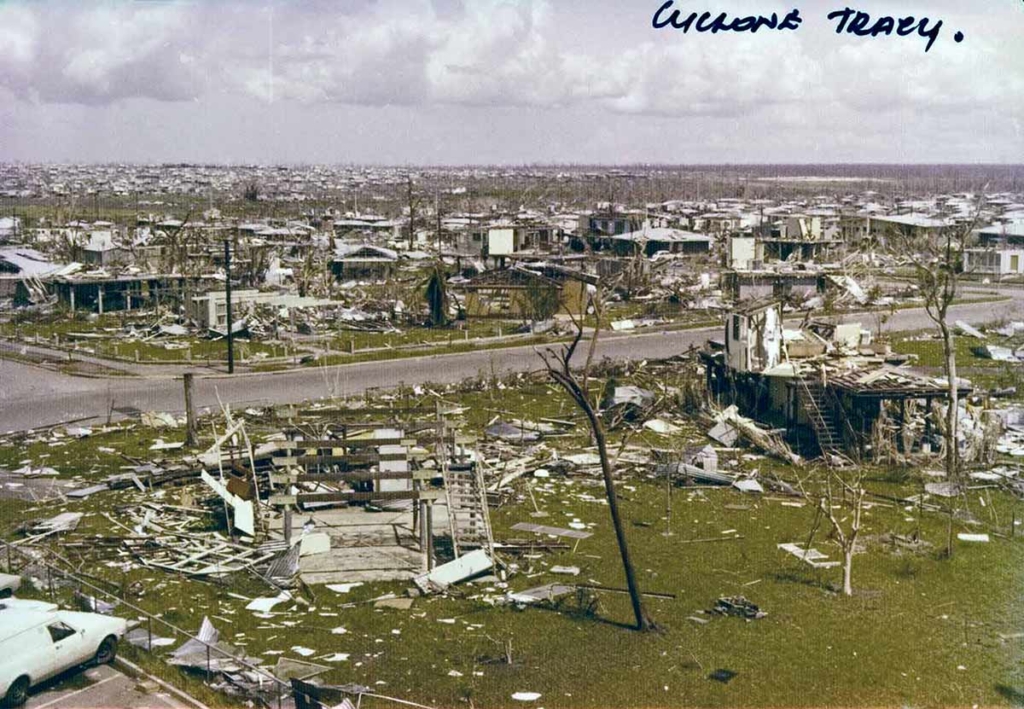In this edition of Tait Talks, we feature Critical Comms magazines’ interview with Tait Communications’ Asia-Pacific Managing Director – Dr. Paul Elmes, asking a few questions regarding the state of the communications industry, growth opportunities, and the industry’s biggest challenges.
What opportunities do you predict for the growth of your industry in 2024?
The land mobile radio (LMR) industry is set to continue to grow in 2024 – and at least for the next decade and potentially beyond. LMR technology remains unparalleled in delivering real-time, mission-critical voice communication. This assertion may challenge the convictions of some within the telecommunications community, but I firmly believe that both LMR and cellular technologies have their roles in ensuring the safety of emergency services and critical infrastructure workers.

Voice communications remains the primary means by which we communicate with mobile field workers. Despite the preferences amongst our younger generations, text messaging is not an effective or efficient form of communication. Voice offers a far richer medium. The human ear has evolved to detect auditory cues, such as variations in tone, pitch and volume, which can convey emotional nuances. The ability to discern emotions like fear through tone of voice is hardwired into our biology. Identifying distress in a colleague’s voice triggers an instinctive response, with potentially life-saving immediacy.
LMR networks have undergone continuous refinement over five decades, tailored to the precise needs of the public safety community. One-to-many, all-informed group communications aligns with the standard operating procedures of the emergency services. Features developed by manufacturers often find their origins in real-world use cases, with the operating requirements specified by the radio users themselves. Quality of service and quality of experience are not just defined but vigorously demanded by end users.
In contrast, cellular networks were originally designed for consumer-grade one-to-one communication. While there have been strides in developing push-to-talk and off-network capabilities, these features are yet to be proven at the coalface, so to speak. Evaluating a feature in a controlled environment is one thing, but relying on its performance when lives are on the line is an entirely different matter. Cellular technology has its place, but LMR has been forged and refined in the heat of real-world experience. It stands as the only serious choice.

New 5G radio network telecommunication equipment smart radio modules mounted on metal tower providing power for radio antennas to radiate strong signal waves over the dense urban city
What are the biggest challenges facing your industry in 2024?
The foremost challenge facing the LMR industry in 2024, as it has been for the past five decades, is the lack of interoperability. Interoperability is the ability for different agencies, from different jurisdictions, to exchange voice communication on demand and in real time – usually to coordinate the response to an accident of natural disaster.
This challenge has been a known issue in Australia since the time of Cyclone Tracy’s devastation of Darwin in 1974. Subsequently, it has been repeatedly cited in inquiries and Royal Commission reports following natural disasters, particularly during the 2019-2020 bushfire season, as a significant impediment to coordinated response efforts. So what limits interoperability?
The transition from analog to digital technology has brought the adoption of open standard protocols. In Australia, public safety organisations opted for the North American P25 standard, while non-public safety entities turned to the European Digital Mobile Radio (DMR) standard as a more cost-effective alternative to P25. This divergence has leg to a diverse array of user groups, including utilities, local government authorities, transportation organisations and mining operations, embracing DMR technology for their critical communications. However, there is no inherent interoperability between the P25 and DMR standards.
Moreover, due to constraints in device technology, it was not feasible until relatively recently to manufacture a single device capable of spanning the frequencies most commonly user for radio communication. The industry has thus adopted internationally recognised frequency bands. Numerous factors, including licensing regulations and spectrum availability, dictate the choice of a particular frequency band for any given network. Even when two adjacent networks use the same technology (such as P25), if their frequency bands differ, they lack native interoperability. While workarounds exist, technology choices and frequency band selections have resulted in the creation of ‘islands of operation’.
What is your company doing to make critical communication accessible and affordable in the current economy?
Tait has recently introduced the TP9800 multiband P25 and TP9700 multiband DMR radios. These devices encompass a transceiver spanning 136 to 941 MHz, thanks to advancements in semiconductor technology. These radios are expected to significantly enhance interagency and interstate radio communication, potentially rendering moot to recurrent recommendations for interoperability in the inquiry and commission reports.
Next year, Tait will release the TP9900, a multiband and multi-protocol P25 and DMR radio. With the TP9900, any first responder agency in need of interoperability between P25 and DMR can effortlessly achieve it through a mode change – simply switch from a P25 VHF channel to a DMR UHF channel, or vice versa, with the turn of a knob. The TP9900 represents a substantial stride towards eliminating the existing ‘islands of operation’ and bridging the interoperability requirements of both P25 and DMR users who need to exchange voice communication.
An engineer by training, Paul began his career as a research scientist at the UK’s Defence Evaluation and Research Agency while also completing his doctorate. Paul has a broad background across both the public and private sectors, holding senior positions in government, education and commercial enterprises. Paul has held senior product management roles at Tait Communications; most recently, he was the VP of Product Management, responsible for Tait’s global product portfolio.
Article Courtesy of Critical Comms Magazine, view the full November & December 2023 release here.
Read the previous Tait Talks topic: Technical RF Expertise is Hard to Find







